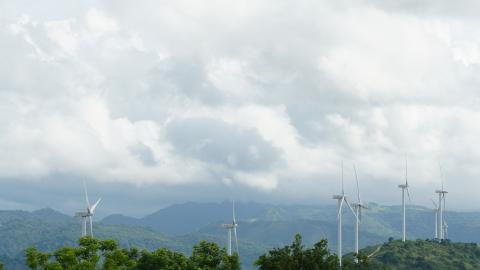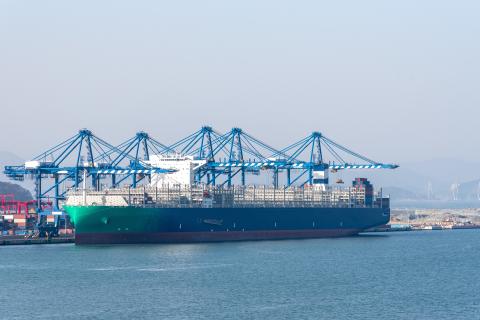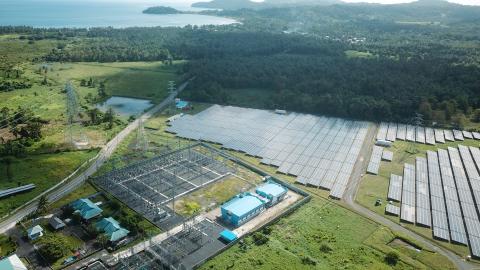IEEFA op-ed: Losses make Indonesian electric company a high-risk bet
In early May, one of Japan’s major insurers, Dai-ichi Life, became the first Japanese financial institution to restrict lending to coal-fired power plants.
This news came only days after Allianz, Europe’s largest insurer, announced it would immediately pull its coverage from coal-fired power plants and coal mines, and barely a fortnight after banking giant HSBC ruled out coal-power financing.
Nowhere will the importance of these announcements resonate more strongly than in the corridors of Indonesia’s state electricity company PLN, which has launched a US$5 billion global medium-term note program to raise money to expand its largely coal-based power business.
While European and U.S. institutions have been clamping down for some time on coal lending, Japanese financiers, both public and private, had seemed steadfastly in the fossil fuel camp until now. But the Dai-ichi move came as no surprise, since no institution is immune to the global transition from coal to clean energy.
What’s more, since Japanese financial players tend to move as a pack, quieter but more determined shifts are undoubtedly already in the pipeline.
PLN’s aggressive coal-fired growth plan will lead to a sharp increase in both subsidies and rates by 2021.
At a recent annual coal industry conference, Deputy CEO Dharma Djojonegoro of PT Adaro Power, an Indonesian independent power producer, told an audience packed with industry executives that “it is getting more difficult to find financing for coal power plants, with many Europe banks and export credit agencies ruling out coal financing, and the Japanese trailing behind.”
The timing could not be worse for PLN, which began road shows in late April offering U.S.-dollar bonds and/or offshore rupiah bonds to be issued in the near future.
That the utility’s proposed energy expansion depends so heavily on coal is the first problem, because coal funding has become a no-go zone for many financial institutions. And PLN’s challenges are exacerbated by forces out of its control, a result of turbulent times for emerging market issuers.
THIS RISK AVERSION HAS RESULTED IN A SELL-OFF OF EMERGING MARKET BOND FUNDS as investors seek a safe haven for their money.
Unfortunately for PLN, the utility is viewed as anything but a port in the storm. This is particularly so given PLN’s financial outlook and its projected increase in operating-income losses over the next four years. Historically, PLN’s losses have been covered by a combination of direct government subsidies and rate increases, and new IEEFA research indicates that PLN’s aggressive coal power growth plan will lead to a sharp increase in both subsidies and rates by 2021, with required support nearly tripling by then.
The government pumped $3.6 billion in cash into PLN in 2017 alone, and we see annual subsidies going as high as $9.6 billion by 2021—an amount the government would probably be hard-pressed to cover. That leaves rates at risk of rising, an issue investors cannot ignore, particularly given the expected sharp increase in operating losses likely over the next four years.
We see PLN’s electric rates increasing by a total of 26.8% to cover the gap between 2017 subsidy payments and future operating losses.
For debt investors, PLN’s financial fragility matters because the funding environment is deteriorating for coal-heavy sectors vulnerable to climate risk. As more banks and investors withdraw from coal-fired power generation, it is worth remembering that issuers like PLN must try to justify coal as the only way to meet the needs of its consumers.
This is a hard case to make, given trends across the global electricity generation sector.
According to a 2017 World Bank study, “compared to other countries of the world, Indonesia has very favorable potential for [solar ] PV for power generation.”
Alternatives to coal-fired generation have often been systematically overlooked and, because of hasty decisions taken in its 2018 electricity procurement business plan, Indonesia’s already modest renewables program has been dialed back to preserve a commitment to coal.
Indonesia certainly needs more investment to drive growth, but while coal may seem like the easier option today, it also represents short-sighted thinking. Climate regulations aside, coal is fast losing market share to cheaper renewables in many countries that have created the right market conditions for transition.
FIVE YEARS AGO IN INDIA, FOR INSTANCE, IT WAS ALMOST unthinkable that solar would become less expensive than coal. Yet that is exactly what has happened, thanks to policy change and rapid acceptance of transparent reverse auctions.
Indonesia is not there yet, but longer-term investors are well aware nonetheless of the market impacts of the precipitous decline in the price of renewable energy. This presents a significant opportunity for PLN and the Indonesia government alike—if it is managed correctly.
While applying the brakes is rarely an enticing option, international market jitters could well provide a reason to slow the headlong rush into new coal infrastructure, a result that would be in the best interest of Indonesia in the medium and long term alike.
Elrika Hamdi is an IEEFA energy analyst. A version of this commentary first appeared this week in the Jakarta Post.
RELATED ITEMS:
IEEFA Update: Indonesia’s Electric Company Gets Its Bond Deal Done, But Investor Risk Remains
IEEFA Indonesia: Coal-Centric State Utility Will Likely Raise Rates by 2020
IEEFA Asia: Opportunity Now in Broad Electricity Transformation Trends















